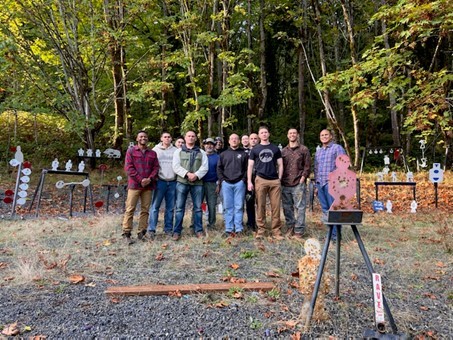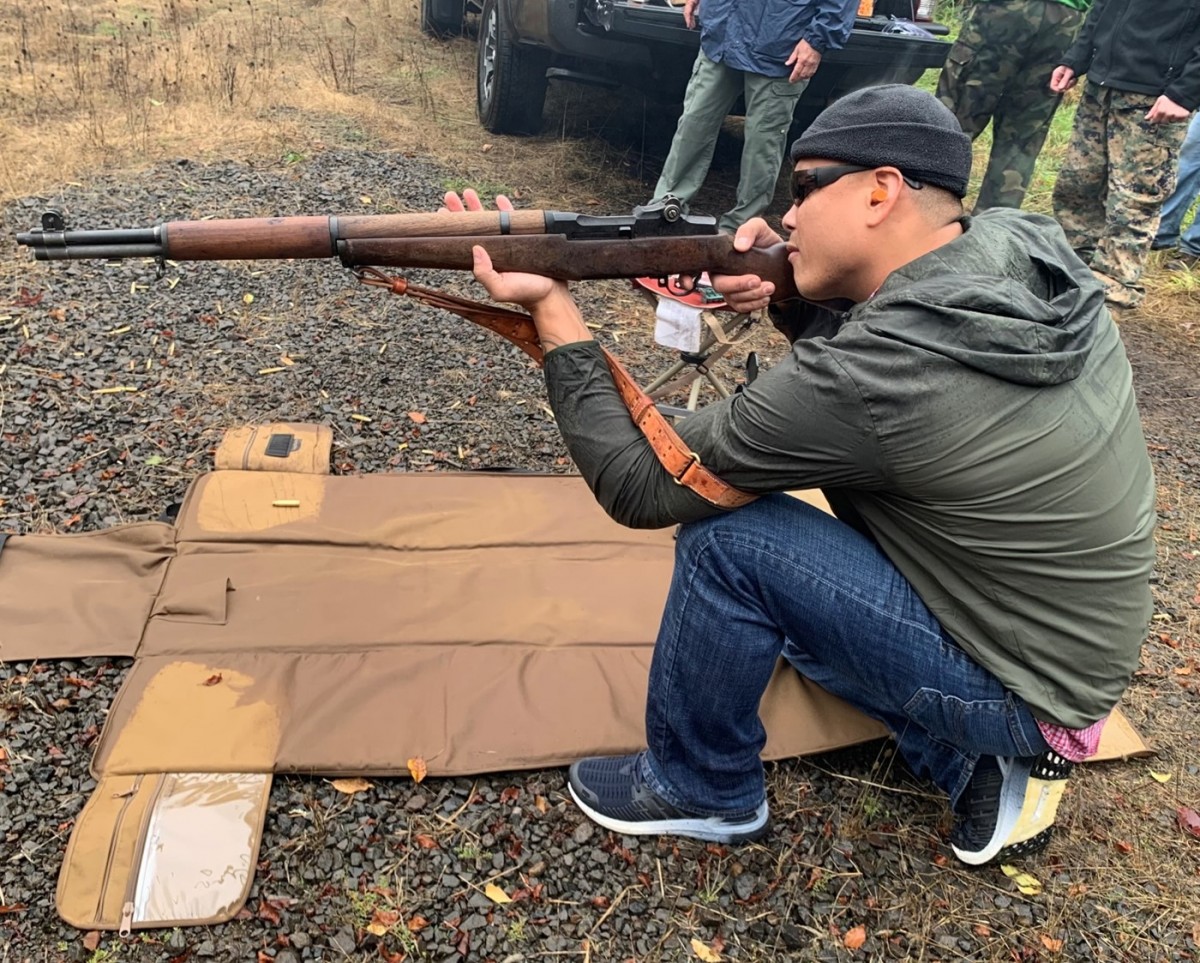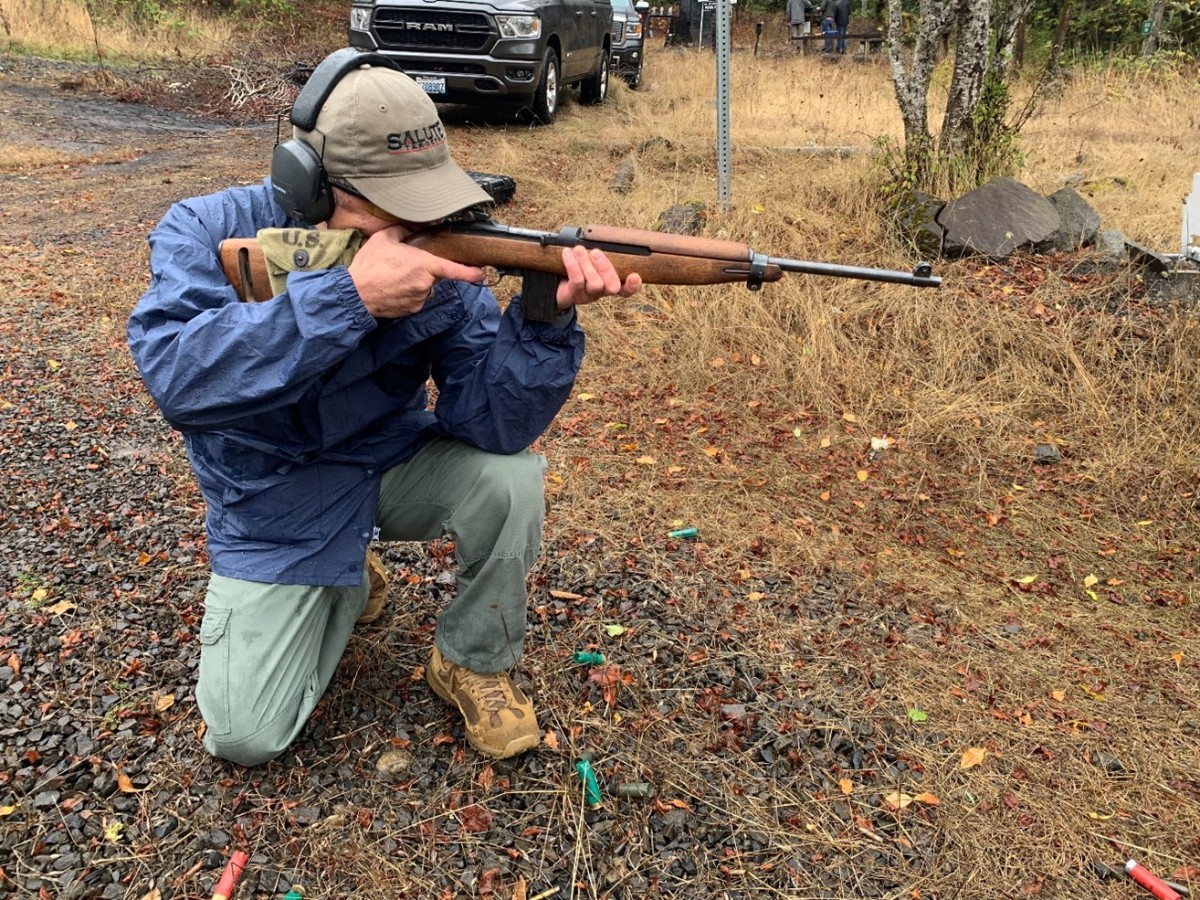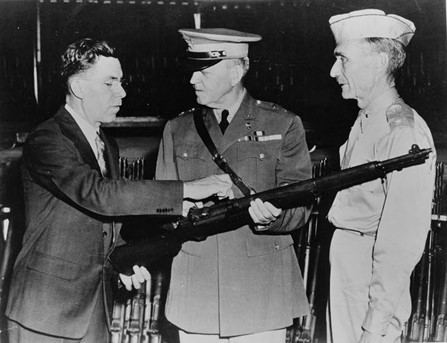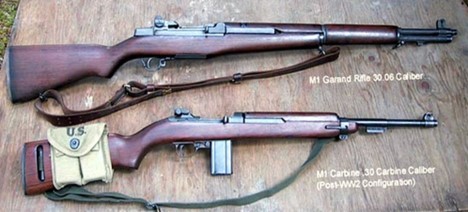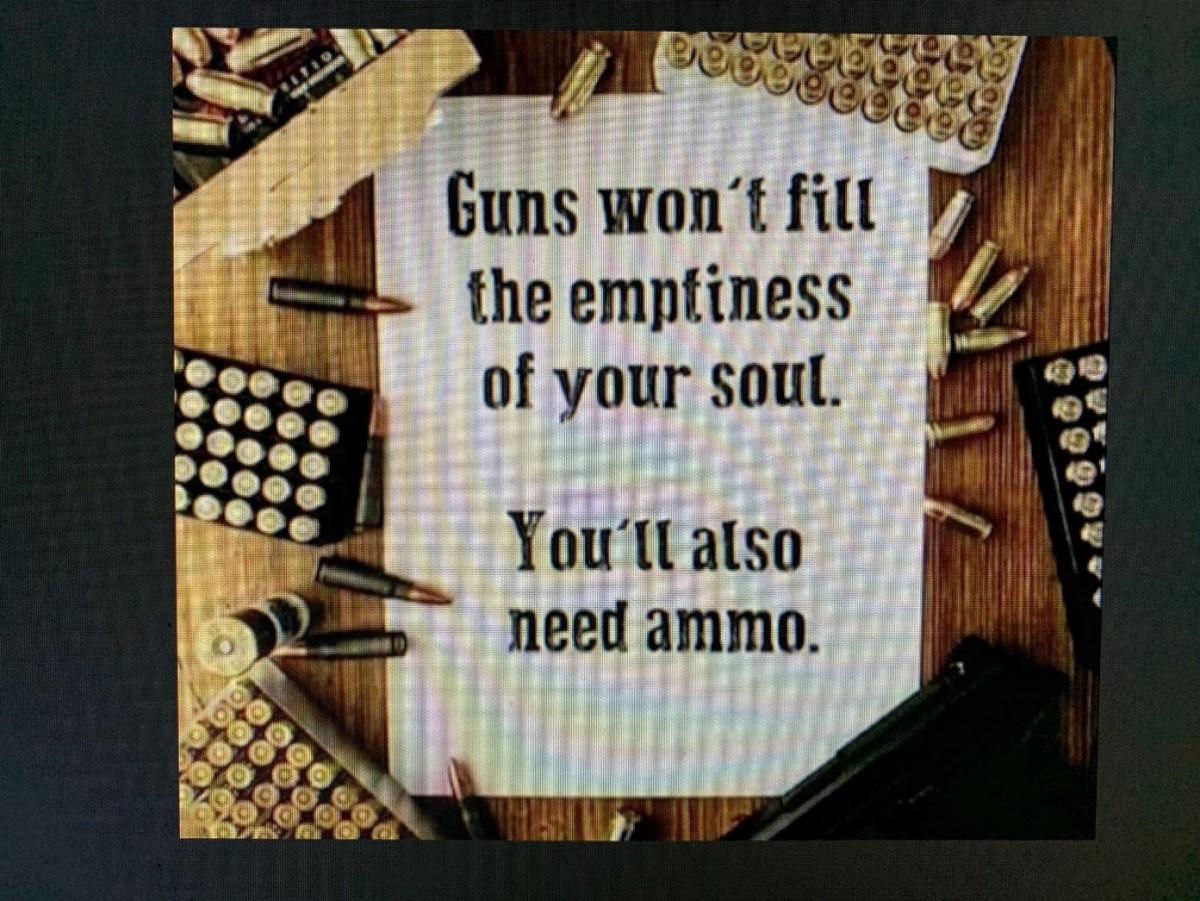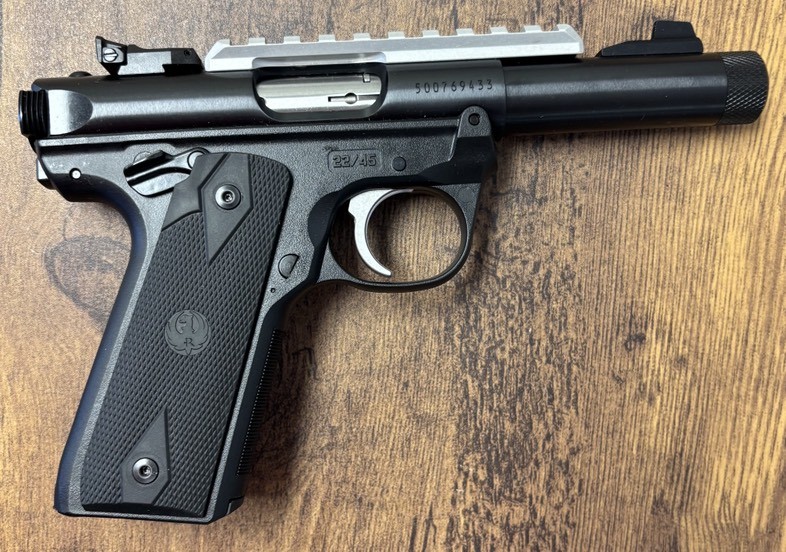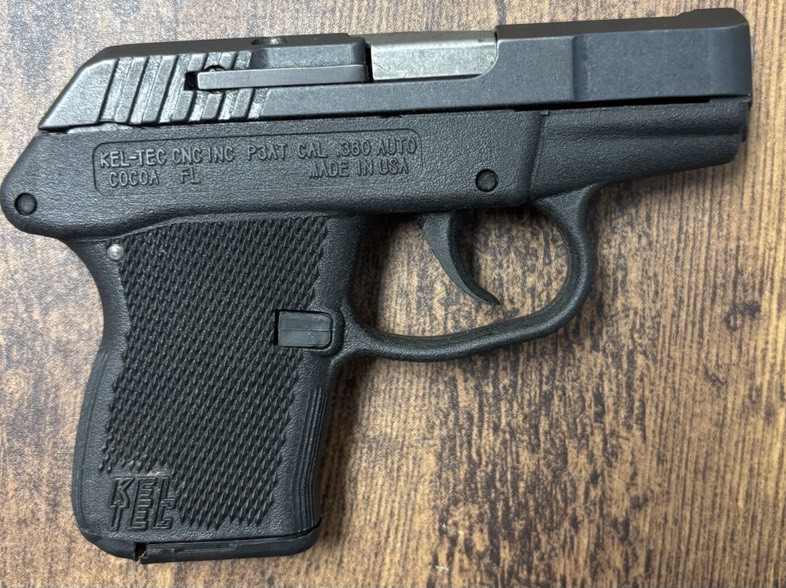Marines Busting Caps
Recruiting Service Portland, Oregon
2021-2022 Therapy with WWII Classics
By Col Mike Howard US Marines (Ret), 1 November 2022
Last Friday was “therapy day” for the dedicated, hard-charging #Marines of Recruiting Station Portland, Oregon. For several years now, they have taken time to gather on a private range in Helvetia, Oregon, to celebrate their teamwork and significant accomplishments. This consists of bringing their own personal weapons: pistols, shotguns, carbines, and rifles to a series of tiered ranges equipped with state-of-the-art steel reactive Salute Targets. I always appreciate the opportunity to host them, along with a close friend (police officer) originally from Okinawa, Japan, who serves as our Range Safety Officer. Many of these Marines have various Military Occupation Specialties, but all Marines share a love of precision target shooting. Half of this crew are combat vets of either the Iraq War or War in Afghanistan, so it was also a time to share old “War Stories” and compare lessons learned, both from combat, and on shoots such as this. Professionalism, skill, camaraderie, and humor make it a special time.
History and heritage are important to Marines, and so it was a real treat to also have a WWII M-1 Garand in .30-06 and an M-1 .30 caliber carbine at this gathering. All of us were impressed with both these weapons, and as our fathers and grandfathers had told us when we grew up shooting under their mentorship, both trusted weapons were simple, reliable, easy to learn, and very accurate at distances out to 500 yards.
The #M1Garand or M1 rifle is a semi-automatic rifle that was the service rifle of the U.S Army and the United States Marines during World War II and the Korean War. The rifle is chambered for the .30-06 Springfield cartridge and is named after its Canadian-American designer, John Garand. It was the first standard-issue autoloading rifle for the United States. By most accounts, the M1 rifle performed well. General George S. Patton called it "the greatest battle implement ever devised". The M1 replaced the bolt-action M1903 Springfield as the U.S.' service rifle in 1936, and was itself replaced by the selective-fire M14 rifle on March 26, 1958. A few words about pronunciation of the name.
Sources differ on the pronunciation of the M1 Garand. Some, such as General Julian Hatcher's The Book of the Garand (1948), give /ˈɡærənd/, (Gare-and) identical to the pronunciation of John Garand's surname. However, a 1952 issue of Armed Forces Talk, a periodical published by the U.S. Department of Defense, gives the pronunciation as /ɡəˈrænd/, (Guh-rand) saying "popular usage has placed the accent on the second syllable. American Rifleman magazine, while acknowledging /ɡəˈrænd/ as the pronunciation favored by U.S. servicemen, deemed either pronunciation valid.
The M1 Garand was made in large numbers during World War II; approximately 5.4 million were made. They were used by every branch of the United States military. The rifle generally performed well. General George S. Patton called it "the greatest battle implement ever devised." The typical opponent of a US soldier during World War II was usually armed with a slower-firing bolt-action rifle (e.g. the Karabiner 98k for Germany and the Arisaka rifle for Japan). The impact of faster-firing infantry small arms in general soon stimulated both Allied and Axis forces to greatly increase their issue of semi- and fully automatic firearms then in production, as well as to develop new types of infantry firearms.
There was so much for us to learn about these two classic WWII infantry weapons. The M1 carbine (formally the U.S. Carbine, Caliber .30, M1) is a lightweight semi-automatic carbine that was a standard firearm for the U.S. military during World War II, the Korean War and the Vietnam War. The M1 carbine was produced in several variants and was widely used by paramilitary and police forces around the world, and became a popular civilian firearm after World War II.
Despite having a similar name and physical outward appearance, the M1 carbine is not a carbine version of the M1 Garand rifle. In 1925, the U.S. Army began using the current naming convention where the "M" is the designation for "Model" and the number represents the sequential development of equipment and weapons. Therefore, the "M1 carbine" was the first carbine developed under this system. The "M2 carbine" was the second carbine developed under the system, etc.
The M1 carbine saw extensive use in WWII. With its reduced-power .30 cartridge was not originally intended to serve as a primary weapon for combat infantrymen, nor was it comparable to more powerful assault rifles developed late in the war. However, it was markedly superior to the .45 caliber submachineguns in use at the time in both accuracy and penetration, and its lighter .30 caliber cartridge allowed soldiers to carry more ammunition. As a result, the carbine was soon widely issued to infantry officers, American paratroopers, non-commissioned officers, ammunition bearers, forward artillery observers, and other frontline troops. The first M1 carbines were delivered in mid-1942, with initial priority given to troops in the European Theater of Operations (ETO).
During World War II a standard U.S. Army infantry company was issued a total of 28 M1 carbines. The company headquarters was issued nine carbines (for the company commander, executive officer, first sergeant, mess sergeant, supply sergeant, bugler, and three messengers), the weapons platoon was issued sixteen carbines (for the platoon leader, platoon sergeant, two platoon messengers in the platoon headquarters, one messenger in each of the two mortar and machine gun section headquarters, and ten for the mortar and machine gun ammunition bearers), and the three rifle platoons were issued one each (for the platoon leader).
The M1 carbine gained generally high praise for its small size, light weight, and firepower, especially by those troops who were unable to use a full-size rifle as their primary weapon. However, its reputation in front-line combat was mixed and negative reports began to surface with airborne operations in Sicily in 1943 and increased during the fall and winter of 1944.
In the Asiatic-Pacific Theater, soldiers and guerrilla forces operating in heavy jungle with only occasional enemy contact praised the carbine for its small size, light weight, and firepower. However, soldiers and marines engaged in frequent daily firefights (particularly those serving in the Philippines) found the weapon to have insufficient penetration and stopping power. While carbine bullets would easily penetrate the front and back of steel helmets, as well as the body armor used by Japanese forces of the era reports of the carbine's failure to stop enemy soldiers, sometimes after multiple hits, appeared in individual after-action reports, postwar evaluations, and service histories of both the U.S. Army and the U.S. Marine Corps.
The carbine's exclusive use of non-corrosive-primer ammunition was found to be ideal by troops and ordnance personnel serving in the Pacific, where barrel corrosion was a significant issue with the corrosive primers used in .30-06 caliber weapons.
It is important for every generation of Americans to know and appreciate their 2nd Amendment heritage. And this essential could not have been experienced better than by 21st Century U.S. Marines shooting and experiencing the classic 20th Century rifle and carbine that helped achieve American victory in WWII.
